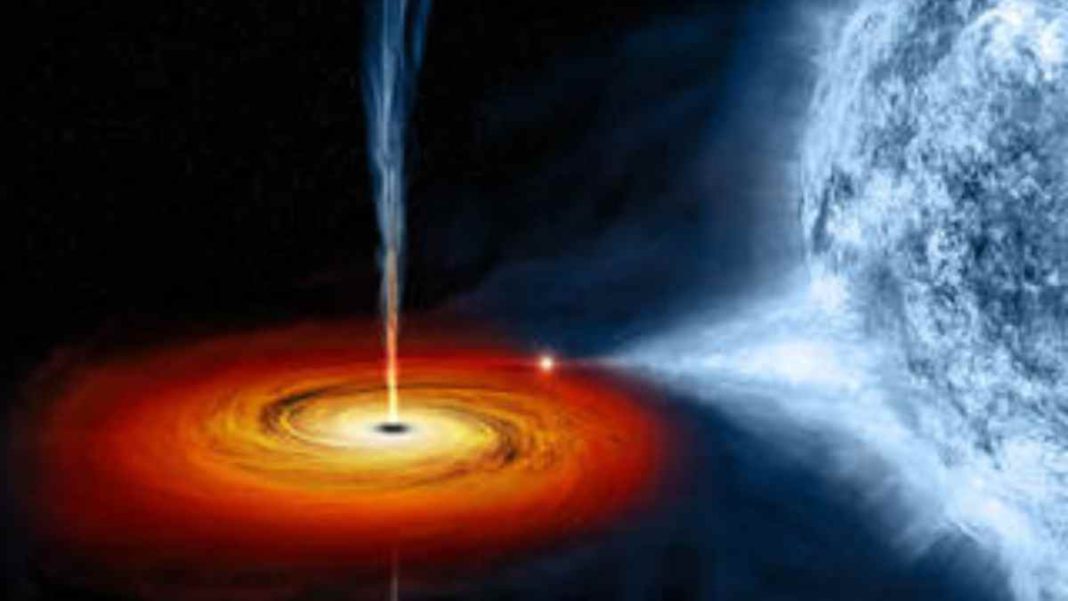UNITED KINGDOM: Astronomers have unveiled a remarkable phenomenon: a sun-like star, located 520 million light years from Earth, is gradually being consumed, piece by colossal piece, by a supermassive black hole.
The nearest supermassive black hole to our own solar system, known as Sagittarius A*, resides at the heart of the Milky Way galaxy, boasting a mass four million times greater than our own Sun.
Supermassive black holes are enigmatic behemoths that typically inhabit the cores of galaxies and are formed through the cataclysmic gravitational collapse of massive stars. Their gravitational pull is so relentless that even light itself is unable to escape their clutches.
In an intriguing twist of fate, astronomers have identified a relatively nearby spiral-shaped galaxy hosting a supermassive black hole as it voraciously consumes segments of a passing star.
This extraordinary event highlights the immense scale of celestial carnage as the star, on an elongated, oval-shaped orbit, ventures perilously close to the black hole.
The research team, whose findings were published in Nature Astronomy, pinpointed the star’s location at a distance of 520 million light years from our own solar system. A light year, for context, represents the distance light travels in one year, equivalent to roughly 5.9 trillion miles (9.5 trillion kilometers).
This particular supermassive black hole, though still an astronomical giant, is comparatively diminutive in size, boasting a mass a few hundred thousand times that of our Sun. The data utilized in this study were meticulously gathered from NASA’s orbiting Neil Gehrels Swift Observatory.
The star in question orbits the black hole every 20 to 30 days. As it approaches one end of its orbit, inching closer to the celestial predator, a mesmerizing process unfolds—a gradual stripping away of the star’s outer atmosphere, an occurrence scientifically termed a “repeating partial tidal disruption.”
While the star’s distance from the black hole is sufficient to prevent total obliteration, the matter drawn into the voracious maw of the black hole experiences a tremendous surge in temperature, reaching an astonishing 3.6 million degrees Fahrenheit (2 million degrees Celsius), releasing copious amounts of X-rays into the cosmos.
Astrophysicist Rob Eyles-Ferris from the University of Leicester in England, one of the study’s principal investigators, provided insights into the unfolding cosmic drama.
Eyles-Ferris explained that over time, the star’s orbit will inevitably decay, causing it to draw nearer and nearer to the supermassive black hole until it ultimately meets its complete demise. This gradual process is anticipated to unfold over the course of several years, and potentially decades or even centuries.
Also Read: GAO Audit Urges NASA Transparency on SLS Rocket Costs amidst Budget Concerns



